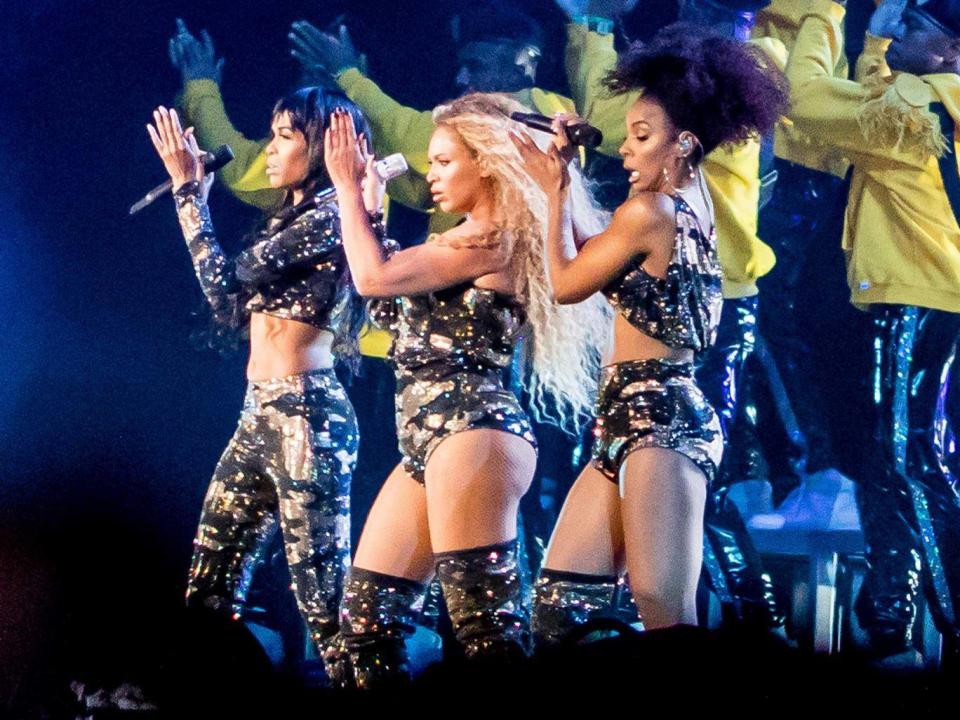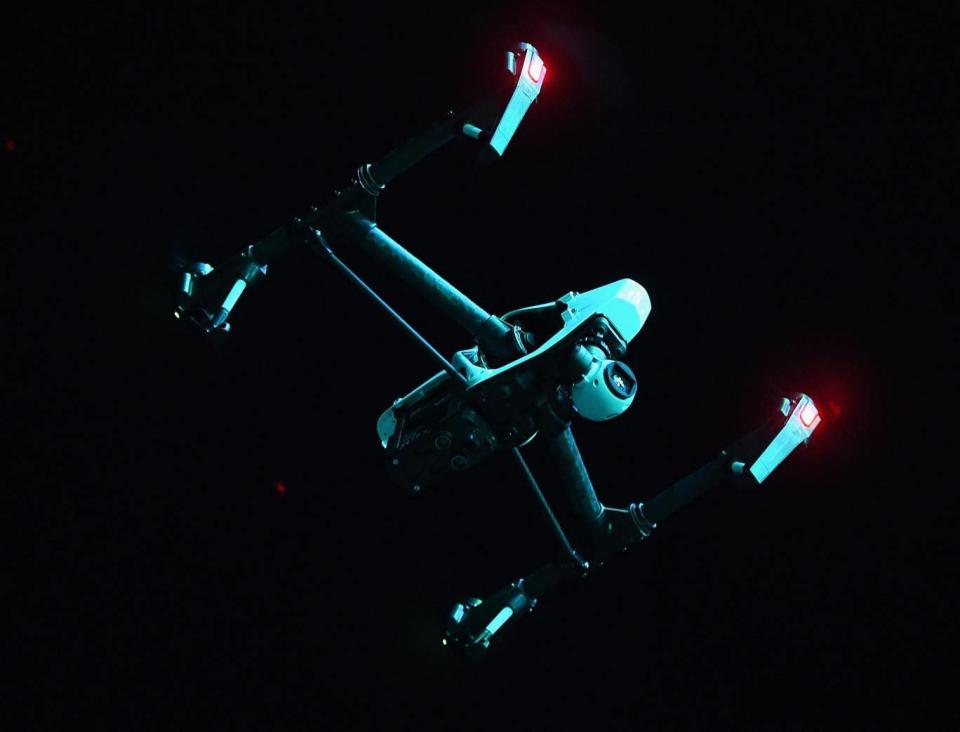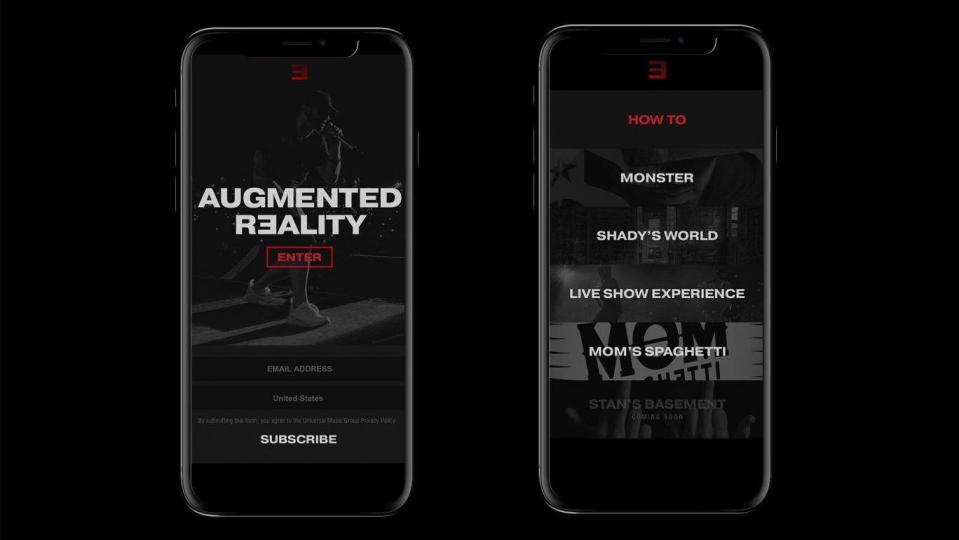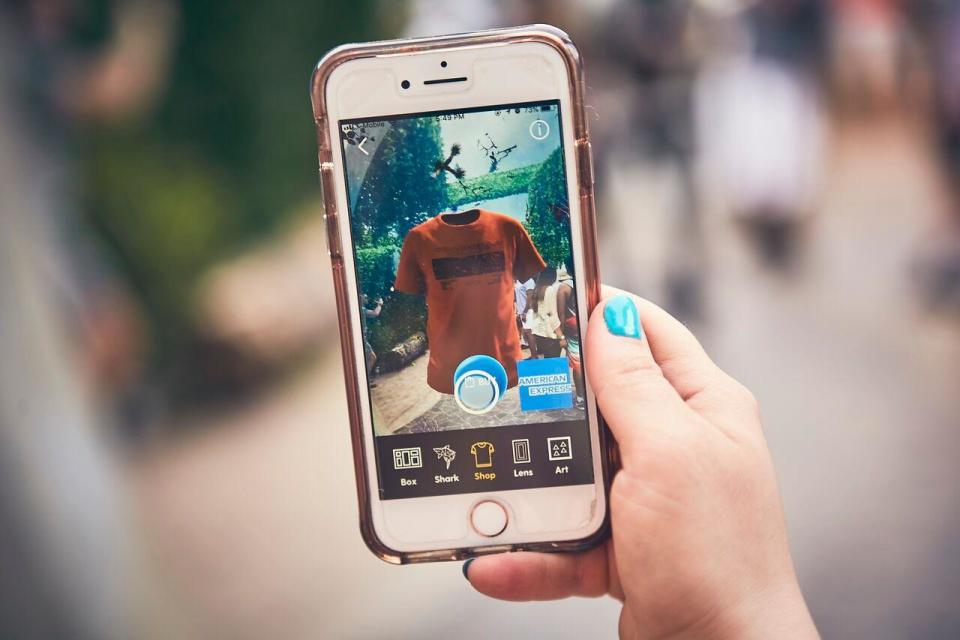Coachella 2018: Beyoncé's boldness, augmented reality and LGBT+ visibility
Coachella successfully evolved in its 19th season as a music festival — with Beyonce making history as its first black female headliner ever, jaw-dropping drones from Odesza, increased queer representation across the lineup, and more augmented-reality experiences.
Vocal and dance prowess aside, Beyonce elevated the impact of her headlining performance by celebrating black history during her homecoming-themed set, a loud-and-proud homage to historically black colleges.
Flanked by more than 100 dancers and marching band members, Beyonce delivered a culturally important set in a year when no rock acts were chosen as headliners for the first time in the festival’s nearly two-decade history.
She gave nods to Nina Simone and Malcolm X as well as sang “Lift Every Voice and Sing,” which is often referred to as the “black national anthem” — and then immediately announced a related scholarship initiative that tied back to the homecoming theme.

And as if this all weren’t enough, she brought out Kelly Rowland and Michelle Williams for a Destiny’s Child reunion as well as husband Jay-Z and sister Solange as surprise guest performers during weekend one. J Balvin joined for “Mi Gente” the following weekend. “Coachella, thank you for allowing me to be the first black woman to headline,” Beyonce said onstage, humbly acknowledging the magnitude of the moment. “Ain’t that ’bout a bitch?”

After Beyonce lit up the stage, electronic music duo Odesza lit up the sky with more than 400 synchronized “Shooting Star” drones that synced beautifully to Odesza’s music and left the audience mesmerized, only during weekend one though.

The Intel-powered drones, which each featured LED lights, soared above the Coachella festival grounds like bright fireflies to form animations, similar to the way the multi-colored drones operated during Lady Gaga’s 2017 Super Bowl performance and the 2018 Olympics Opening Ceremony.

In what could pave the way for other artists, headliner Eminem debuted an augmented-reality app at Coachella, and it will live on afterward for fans to use during his tour. The app offered visual perks to fans who were within viewing distance of his set and additional features inspired by his career and lyrics.
Fans only needed to point their phone cameras at the stage or toward a logo at the Mom’s Spaghetti pop-up booth to activate the AR experiences, which displayed the rapper throwing up plates of spaghetti or showed a Godzilla-sized Eminem with helicopters flying around him.

Meanwhile, Goldenvoice improved the Coachella app for attendees with an augmented-reality experience from app partner American Express. The AR camera within the app allowed festival-goers to point their phones around the grounds to easily locate and buy Coachella merchandise. “It’s not immediately obvious where augmented reality is going yet in the music industry, but we’re watching closely and we do know people at Coachella just want speedy ways to pay for things,” Janey Whiteside, AmEx’s SVP and GM of global charge products, benefits and services, told The Independent.
Music festivals started shifting away from archaic cash-only payments in favour of cashless payments in 2014 by experimenting with new ways for attendees to pay for food, drinks and swag in order to make lines move faster, increase sales and reduce the number of cash and card thefts.
Those new convenient payment methods include mobile wallets like Apple Pay, Android Pay and Samsung Pay, as well as an RFID (radio frequency identification) payment option where attendees link their credit or debit cards to their festival wristbands.
The LGBTQ representation at this year’s festival is seemingly in line with how far America has progressed since 1999 when Coachella launched before any states had even legalized same-sex marriage (the first state legalized it in 2004, and as of 2015, it’s legal in all states).

LGBTQ artists like Hayley Kiyoko, Lynn Gunn of PVRIS, Declan McKenna, Kevin Abstract of Brockhampton, Perfume Genius, Kelela and Tyler, The Creator proudly lead the charge, attracting diverse and lively crowds. Bleachers frontman Jack Antonoff also performed songs from the popular 2018 gay romantic movie Love, Simon — at one point bringing out surprise guest and LGBTQ ally Carly Rae Jepsen for “Alfie’s Song (Not So Typical Love Song)” from the Love, Simon soundtrack.
While Coachella partially reinvents itself by opening its stages for more diverse performers and by experimenting with new technologies, some things have remained the same. Those aspects of the desert festival are what keep attendees coming back year after year: the Instagram-able festival fashion, the surprise guest performers, the enormous art installations, and the casual celebrity sightings.
Coachella is an experience. After all, where else will you see Justin Bieber mingling with Yodelling Kid, the pre-teen viral sensation who also performed during Whethan’s Coachella set? Each year is different because music is ever-evolving, but in a way, it’s all the same because it provides a beautiful escape from reality for people from all over the world, if only for a few days.

 Yahoo News
Yahoo News 
